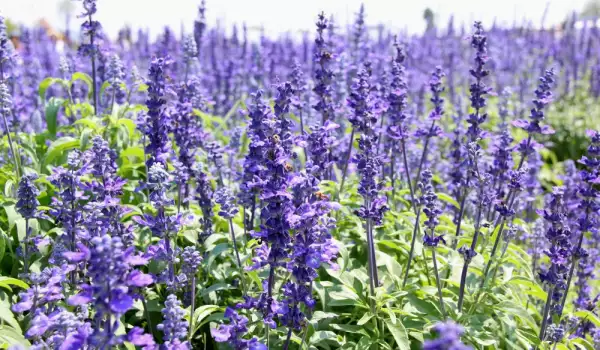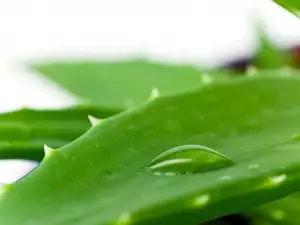Hyssop, Hyssopus, is a genus of 10-12 species of herbaceous plants and subshrubs, belonging to the lippid family. Hyssop is grown in the region of the Eastern Mediterranean to Central Asia.
Hyssop is an aromatic herb with erect branched stems that reach a height of 3 ft (1 m). They are covered with fine hairs on the very top. Hyssop leaves are narrow and elongated.
Its flowers are small, and blue arranged in the upper part of the branch. Blooms in summer. The best known species of this genus is healing hyssop, which is widely grown outside its home areas.
Composition of hyssop
The herb contains about 1% essential oil whose main constituents are pinocamphone and pinene, cineole, camphene and sesquiterpenes. Hyssop contains tannins and oleanolic acid, rosmarinic acid, mineral salts, gums, sugars, organic acids and the like.
Rhizomes of hyssop have a pleasant, mild smell and slightly peppery flavor. The dried rhizome contains about 3.5% essential oil, bitter and polyphenolic substances, antibiotic compounds and polysaccharides.
Growing Hyssop
Hyssop loves light, but well fertilized soils. It is sown in early spring in a row, with a distance of 14" (30 cm) between them. When propagated vegetatively, in autumn the tufts are removed and divided into parts. Then it is planted in rows at a distance 20-25" (50-60 cm). Hyssop seeds can be sown in the autumn.
Best results are obtained when planted in rows at 1.5" (3.5 cm) distance from each other. Cover with a manure-soil mixture. The next year in spring, when plants grow enough to go to a permanent place and the time is right, Hyssop is sown in lines. In order to intercept successfully, more frequent watering is required at the beginning.
Hyssop is harvested several times. Branches, which will be used for fresh herbs are harvested several times when they reach a height 5-8" (12-20 cm), cuttings are tied in bundles and left to dry. If the surface part is to be used for essential oil, it has to be removed before flowering. Hyssop blooms the second year after sowing.
Collection and storage of hyssop
During flowering, cut only the phyllis, a few inches below the flower’s bottom. For harvesting should be selected dry and sunny weather. Collected parts are cleaned of adventitious impurities and dried in a ventilated, shady place.
Should be tied into bunches, hung on nails or other suitable devices. Properly dried hyssop should have retained its natural state, but may show slight color fading. Dried hyssop must be stored in a dry and ventilated place.

Cooking with hyssop
The Mediterranean and Oriental cuisine uses the leaves of hyssop. It can also be used to flavor cheese, dairy dips, soups, beans, potatoes, meat pies.
Hyssop can be used as a substitute for sage. The taste of hyssop is slightly bitter, but the flavor is very subtle. When drying, however, it is almost entirely lost. To keep the pleasant aroma of the plant, break it off just as it should and put it directly into the dish. Hyssop should be grown in a pot.
Hyssop adds spicy flavor to minced meat, and roast beef. Goes with spices such as dill, marjoram, basil, parsley and oregano. Once put into dishes, they should not be covered with a lid.
Benefits of Hyssop
From hyssop is extracted essential oil, which is relatively expensive, but it does work very effectively. It is used to treat respiratory problems, releasing the accumulated mucus and bronchial spasms.
The aroma of the oil stimulates the appetite and improves digestion. Hyssop is a very good tonic for people who have experienced serious illness, because it creates a feeling of alertness.
The essential oil of hyssop is used to massage sprained places. Moreover, an oil massage soothes nervous tension, insomnia, nervous based migraines, rheumatic pain, muscle and menstrual pain, irregular menstruation, high blood pressure, flu, sore throats and more. Hyssop has a laxative effect.
Hyssop is used in chronic inflammatory diseases of the gastrointestinal tract, constipation and dyspepsia. The herb may be used externally for washing wounds and sores, rinsing the mouth with inflammatory processes in the oral cavity and throat.
Traditional medicine with hyssop
In folk medicine, hyssop is used in infusions for anemia, digestive disorders, asthma and rheumatism. It is used for angina, imposing skin eczema and strum.
To make infusions are needed 2 tsp dried hyssop, which are poured iver with 1 cup boiling water and after cooling, strained. This is a dose for a one day.
Dangers of hyssop
Hyssop oil is to be avoided during pregnancy.










